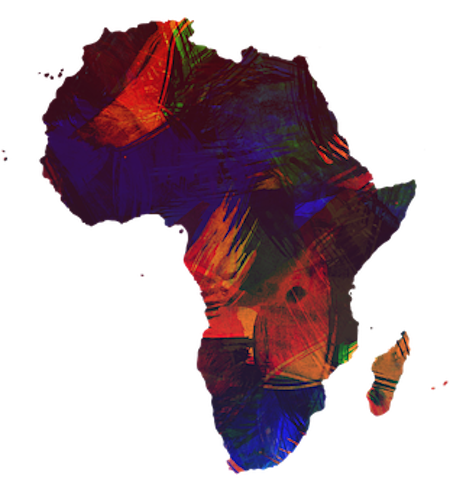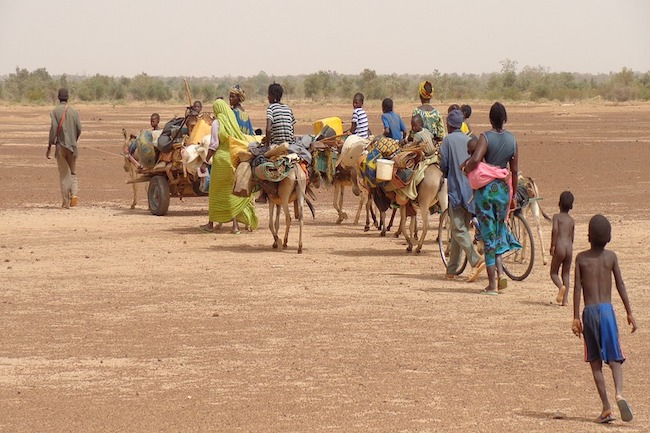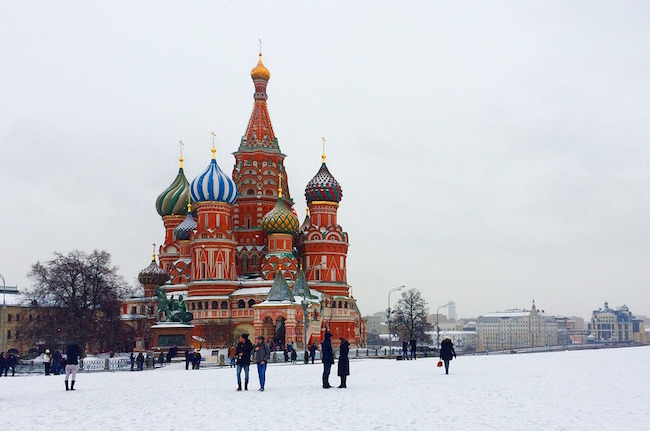Horn of Africa — Washington’s Next Arab Spring? – F. William Engdahl for Journal-NEO
The Biden State Department has just named career diplomat Jeffrey Feltman to be Special Envoy to the Horn of Africa. Given the geopolitical powder keg in the region and given the dark history of Feltman, especially in Lebanon and during the infamous CIA Arab Spring interventions after 2009, the relevant question is whether Washington has decided to explode the entire region from Ethiopia down to Egypt into a repeat of the Syria chaos only far more dangerous. And it’s not only the US which is active in the region.
The group of African countries stretching from Ethiopia, Eritrea, Djibouti and Somalia, astride the geopolitically strategic Gulf of Aden and Red Sea comprise the formal Horn of Africa. It is extended politically and economically often to include Sudan, South Sudan, Kenya and Uganda. This region is strategic among other reasons as the source of the Nile, Africa’s most important river, that flows some 4100 miles north to the Mediterranean in Egypt. The Horn of Africa is also a gateway to major world shipping flows via the Red Sea and the Suez Canal to the Mediterranean. The recent bizarre blockage of a huge container ship that blocked the canal for days, backing up a significant portion of world trade, is indicative of the region’s importance.
A political volcano
The Horn of Africa is clearly being made the target of a new wave of covert and overt destabilization. Now that the Democrats again took control of the US Presidency, the interventions into the region that reached a high point in 2015, with the proxy US war in Syria and the installation of US-backed Muslim Brotherhood regimes in Egypt, Tunisia, Libya in the misnamed Arab Spring Color Revolutions, are apparently resuming, as a high Washington priority.
The February 2021 UN appointment of Volker Perthes as UN Special Representative for Sudan and the June appointment by the Biden Administration State Department of Jeffrey Feltman as US Special Representative to the Horn of Africa signal what is being put into action. Feltman and Perthes worked closely together in black operations during the Arab Spring on the destruction of Lebanon and the destabilization of Bashar al-Assad in Syria. Both were allegedly closely working with the CIA as well.
In accepting his new post in April, coming out of “semi-retirement,” Feltman notably told Foreign Policy magazine that the region had the potential to spiral into a full-blown regional crisis that would make Syria look like “child’s play.” Feltman said, “Ethiopia has 110 million people. If the tensions in Ethiopia would result in a widespread civil conflict that goes beyond Tigray, Syria will look like child’s play by comparison.” He outlined his intended focus: “In terms of an immediate focus, without question, there has to be attention paid to Tigray,” adding that his other leading priorities were the Ethiopia-Sudan border dispute, and the tensions over the Grand Ethiopian Renaissance Dam.
Here we have the preconditions for the destabilization of Africa and the entire region.
Tigray war
The Western powers, including the US Government’s National Endowment for Democracy, have been quietly preparing the coming destabilization for several years. A key step was the 2018 regime change in Ethiopia. In a complex agreement the minority ruling coalition of Tigrayan ethnics agreed after months of well-organized protest to cede power to a broad coalition including their bitter opponents in the Oromo ethnic group. The Tigray in the north contains a minority of 6% in Ethiopia and the Oromo are the largest minority with 34%. In April, 2018 under major international pressure and clear NED regime change intervention, the Tigray Peoples Liberation Front who had ruled with an iron fist since 2012, were forced to step down and agree a transitional coalition until elections to be held in 2020. Abiy Ahmed from the broad ruling Ethiopian People’s Revolutionary Democratic Front and first Oromo to be prime minister. He immediately began steps to replace the EPRDF coalition that has been dominated by the TPLF with a new Prosperity party under his domination.
Here it gets complicated. One of his first acts as Prime Minister was a US-brokered move to end a 20 year war with neighboring Eritrea and sign a treaty which won the British-educated Abiy a Nobel Peace Prize. Eritrea fought a 30-year war until 1991 for independence from Ethiopia. Border disputes between the Tigray Region and Eritrea kept the two at war until the Abiy peace agreement. Suspiciously, Abiy excluded the Tigray TPLF from the peace talks. Now it is being claimed that Abiy had a sinister motive to move against the well-armed regional government in Tigray. Indeed he soon enlisted a willing Eritrean government to create a brutal two-front assault on Tigray forces. In August 2020 when Abiy broke the transitional agreement for national elections, the Tigray region ignored the indefinite postponement and held Tigray regional elections, resulting in armed conflict with the Ethiopian national army, which has since 2020 been joined by Eritrean forces against Tigrayans.
The Tigray group accused Nobel Peace Prize winner Abiy of moving to create an Oromo dictatorship. Oromo people were a principle target of Tigray rule before they stepped down in 2018. The transitional agreement, somewhat like that under Mandela in South Africa, was an agreement of national reconciliation despite past injustices.
It also promised the Tigray region political autonomy and protection against foreign (i.e. Eritrean) forces. But rather than prepare for free elections to create a truly federal state as agreed, Abiy began “purging, and persecution of many key members of the Tigray TPLF including army generals and businesses. This led the TPLF and majority Tigrayan elites to believe they were deceived into giving up power with false promises,” as Jawar Mohammed, an architect of the reconciliation and a leading organizer of the 2016 Ethiopian protests, described it. This is the broad background to the present situation. Jawar, an Oromo, coordinated the protests from the US where his Minneapolis-based Oromia Media Network of satellite TV was based. After he returned to Addis Ababa in 2018 hailed a hero of the liberation movement, the Stanford-educated Jawar was jailed in September 2020 as a terrorist on a phony pretext by Abiy. Abiy’s bent for power was becoming clear.
The damn dam
As he consolidated power, Abiy also refused to negotiate a compromise on one of the most explosive issues in Africa—construction of the huge Grand Ethiopian Renaissance Dam (GERD) that, when completed has the potential not only to generate electricity for Ethiopia, but also to cut off vital water from the Nile to Sudan and Egypt. For Abiy the GERD dam is a symbol of his drive to create a national unity around his rule.
The Grand Ethiopian Renaissance Dam (GERD) on the Blue Nile that provides 85 percent of the Nile’s discharge, began construction in 2011 at an estimated cost of $4.9 billion. It is some 30 kilometers from the border with Sudan. Abiy’s regime has so far refused every attempt at negotiation on the dam with Egypt and Sudan. For around 100 million Egyptians, the Nile’s waters are their “single source of livelihood.” More than 90% of water in Egypt comes from the Blue Nile. Egypt has called for UN intervention which Ethiopia’s Abiy rejects out-of-hand. Abiy has begun filling the dam, a process that will take some 5-7 years, with no consultation on rate of fill or other vital features with either Sudan or Egypt. Egypt has threatened possible military action as has Sudan.
Enter Jeffrey Feltman
Into this explosive region now the Biden State Department has sent Special Envoy Jeffrey Feltman to deal with the Horn of Africa. Feltman has a murky, even dark history. According to French strategic analyst Thierry Meyssan who lived in Damascus, Feltman as US Ambassador to Lebanon in 2005 organized the assassination of former Prime Minister Rafic Hariri. He organized a UN commission that suggested Syria’s Assad was involved with the crime, part of a US plan to split Lebanon from the protection of Syria. Feltman then organized a Color revolution, dubbed the Cedar Revolution, demanding Syrian military and security forces leave Lebanon.
Feltman, working together with then-head of the German government-funded foreign policy think-tank, SWP, Volker Perthes, a Syria specialist, advanced the Obama-Clinton Arab Spring across the Middle East from Cairo to Tripoli and beyond. Their focus after 2011 was to topple Bashar al-Assad in Syria and turn the country into rubble with support from Erdogan, Saudi Arabia and Qatar. Their aim was to bring the Muslim Brotherhood (banned in Russia) into power across the Mideast. Feltman was then the Assistant Secretary of State for Near Eastern Affairs under Secretary Clinton. The two, Feltman and Perthes, continued their regime change collusion under UN auspices after June 2012, when Feltman was appointed Under-Secretary-General for Political Affairs, a position he held until April 2018.
Feltman at the UN had a $250 million budget to intervene where he saw a “UN” necessity, and Syria was at the top of his list. The UN post took focus away from Washington’s role in the Arab Spring destabilizations. He oversaw the recruiting of tens of thousands of Islamist mercenaries from Al Qaeda, ISIS (terrorist organizations, both banned in Russia) and other foreign terrorists to destroy Assad and Syria. It was part of a 2010 top secret Obama Presidential Study Directive-11 (PDS-11), calling for Washington’s backing of the secret fundamentalist Islamic Muslim Brotherhood paramilitary sect across the Middle Eastern Muslim world—and with it, the unleashing of a reign of terror that would change the entire world.
Feltman, working quietly with Perthes who became UN’s Special Envoy to Syria from 2015 to 2016 under Feltman, organized the Syrian opposition as well as financial support to recruit ISIS and Al Qaeda from abroad to destroy the Syrian regime aided by Turkey. The project hit a major roadblock after September 2015 when Russia, on request of the Syrian government, entered the Syrian war. In May 2021, the European Union renewed for one year its sanctions against any person or firm participating in the reconstruction of Syria, in accordance with the secret instructions issued, in 2017, by Jeffrey Feltman when he was serving as UN Under-Secretary General. The document was made public in 2018 by Russian Foreign Minister Lavrov.
Now Feltman is back in the region as Envoy to the Horn of Africa. His old co-conspirator, Volker Perthes, since February , 2021 is officially UN Special Representative of the Secretary General for Sudan. To round out the old regime change team, Biden State Department has named Brett H McGurk to be National Security Council head for Near East and North Africa. When Feltman was organizing the Arab Spring and the destruction of Syria, McGurk served as Deputy Assistant Secretary of State for Iraq and Iran from 2014 through January 2016. McGurk previously worked as advisor in 2004 to Iraq Ambassador John Negroponte and General David Petraeus to organize the Sunni vs Shi’ite civil war in Iraq that led to the later creation of ISIS.
And China…
The regrouping of the Feltman team now in the Horn of Africa region suggests prospects for enduring peace and stability there are grim indeed. As Feltman put it, the Horn of Africa could make Syria look like “child’s play.” It remains to be seen how China, the country with the largest investment in not only Ethiopia, but also in Eritrea, Sudan and in Egypt, will react to the new US deployments in the Horn of Africa. Virtually all of the sea trade between China and Europe passes the Horn of Africa along the Red Sea on its way to the Egyptian Suez Canal.
China has extended well over $1 billion in credits to construct the electricity grid from the GERD dam to cities in Ethiopia. Beijing was far the largest foreign investor during the Tigray TPLF rule with some $14 billion in various projects as of 2018. Since the peace agreement with Ethiopia, China has bought two major mines in Eritrea for gold, copper and zinc. Previously Beijing was the largest investor in Eritrea during the years of war with Ethiopia, and has invested in modernizing of Eritrea’s Massawa port to export copper and gold from China’s mines there. In Sudan where Chinese oil companies have been active for more than two decades, China has a major stake in both Sudan and South Sudan. In Egypt where President El-Sisi has formally joined China’s Belt and Road, there are major ties as well with Chinese investments into the Suez Canal region, container port terminals, telecommunications, light railways and coal power plants to as much as $20 billion. And just to add to the complexity, since 2017 the China PLA Navy has operated China’s first overseas military base directly adjacent to the US Navy base at Camp Lemonnier in Djibouti at the Horn of Africa.
All this creates a geopolitical cocktail of ominous scale, and Washington is not bringing the most honest diplomats into the cocktail bar, but rather regime change specialists like Jeffrey Feltman.
F. William Engdahl is strategic risk consultant and lecturer, he holds a degree in politics from Princeton University and is a best-selling author on oil and geopolitics, exclusively for the online magazine “New Eastern Outlook”.




